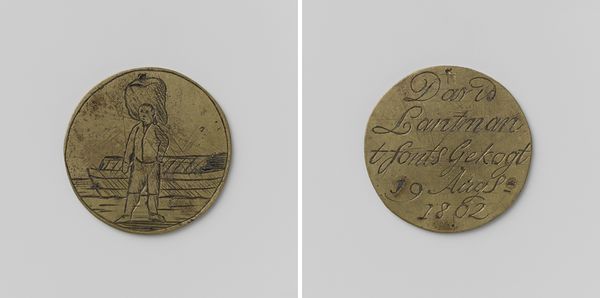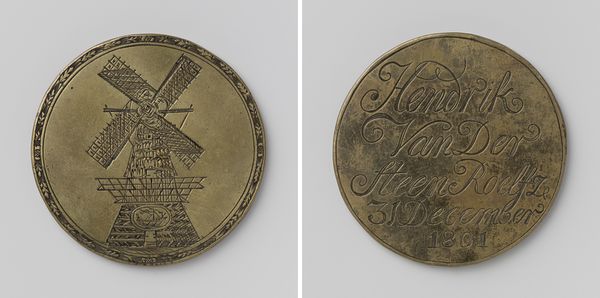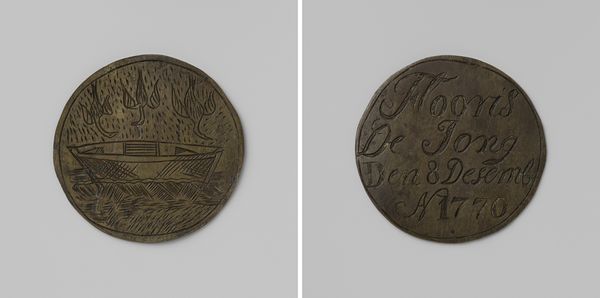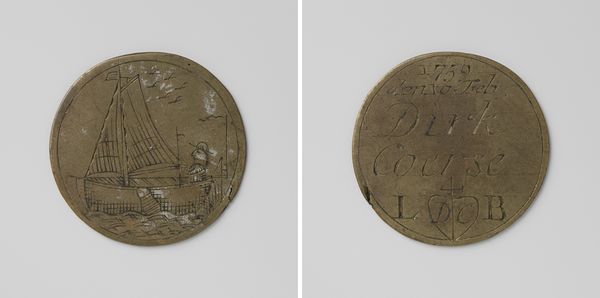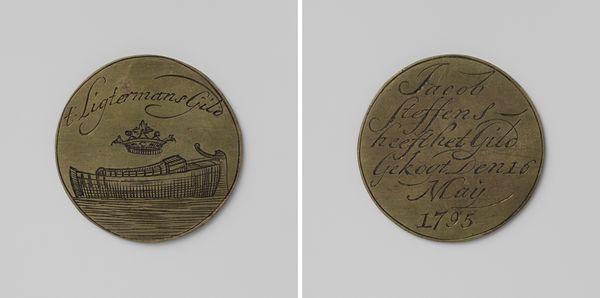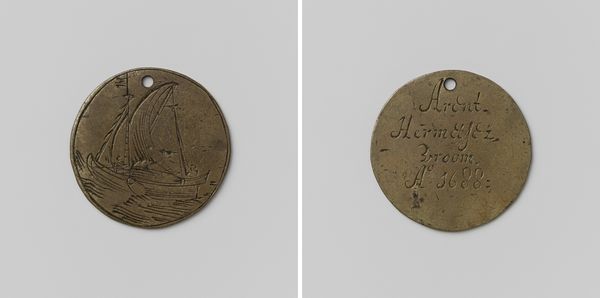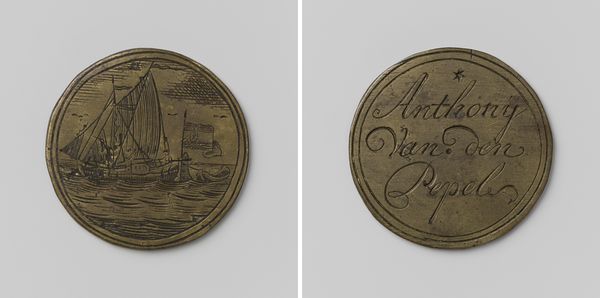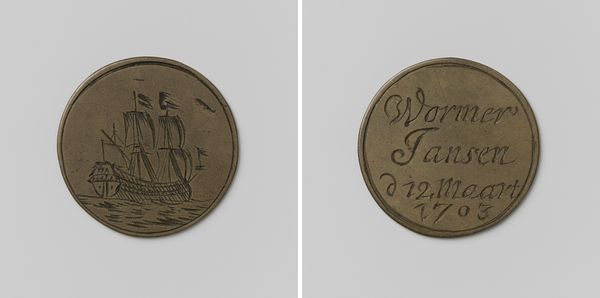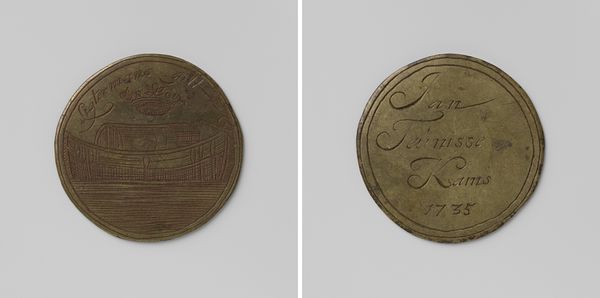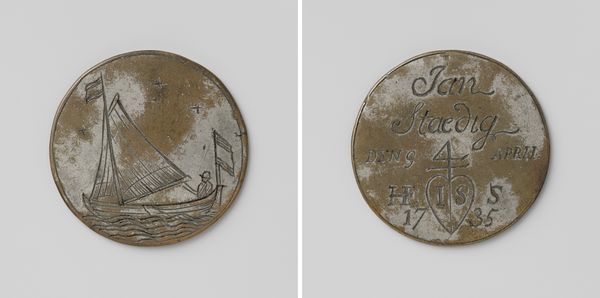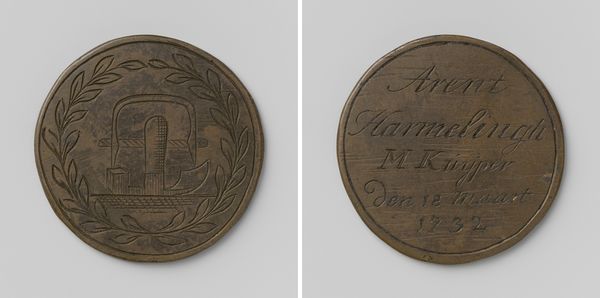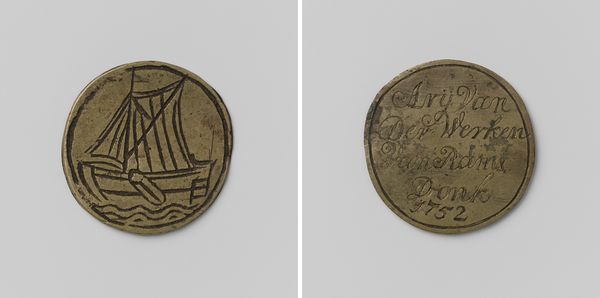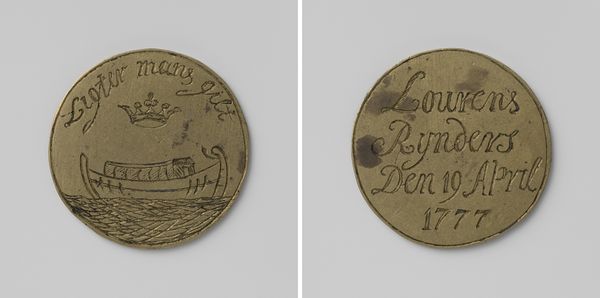
Roei-, steiger- en schuitenvoerdersgilde van Amsterdam, gildepenning van Claas de Jonge, ligplaats Haringpakkerstoren-steiger 1806
0:00
0:00
drawing, print, metal, bronze, engraving
#
drawing
# print
#
metal
#
old engraving style
#
woodcut effect
#
landscape
#
bronze
#
linocut print
#
line
#
engraving
Dimensions: diameter 3.5 cm, weight 11.59 gr
Copyright: Rijks Museum: Open Domain
Editor: Here we have an engraving dating back to 1806: “Roei-, steiger- en schuitenvoerdersgilde van Amsterdam, gildepenning van Claas de Jonge, ligplaats Haringpakkerstoren-steiger." It's a bronze medal, and seeing the detail crammed into such a small space is striking. What layers do you see within this work? Curator: What immediately stands out to me is the glimpse into Amsterdam’s economic structure and social hierarchies through the lens of maritime labor. Guild tokens like these weren't simply decorative; they represented membership, status, and power within a specific trade. It's important to remember that labor was, and remains, intricately linked to identity. Do you see any symbols here, perhaps regarding location and profession, offering insight into identity? Editor: Yes, the boat and inscription certainly seem profession-specific. And the location... Maybe the "Haringpakkerstoren-steiger" hints at a particular place with the city itself playing a key role? Curator: Precisely! It reflects Amsterdam’s position as a major port city. Moreover, guild membership also played a crucial role in regulating labor and ensuring the social and economic well-being of its members, which sometimes reinforced exclusionary practices based on gender, class, and even origin. We need to think critically about who *wasn't* represented. Editor: That's an interesting point, it encourages one to reflect beyond what is presented. There were economic and societal barriers at play that certainly have shaped not only who's present, but also how that image may be perceived today. Curator: Exactly! By interrogating this guild token, we can start to unpack some pretty complex histories of labor, power, and social stratification within the context of Amsterdam in the 19th Century. Editor: That makes me see so much more beyond the beautiful detail. Now I wonder about untold stories.
Comments
No comments
Be the first to comment and join the conversation on the ultimate creative platform.
